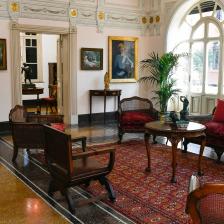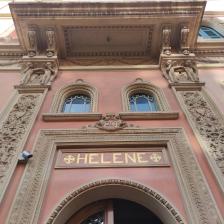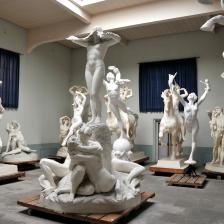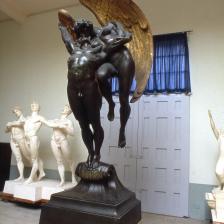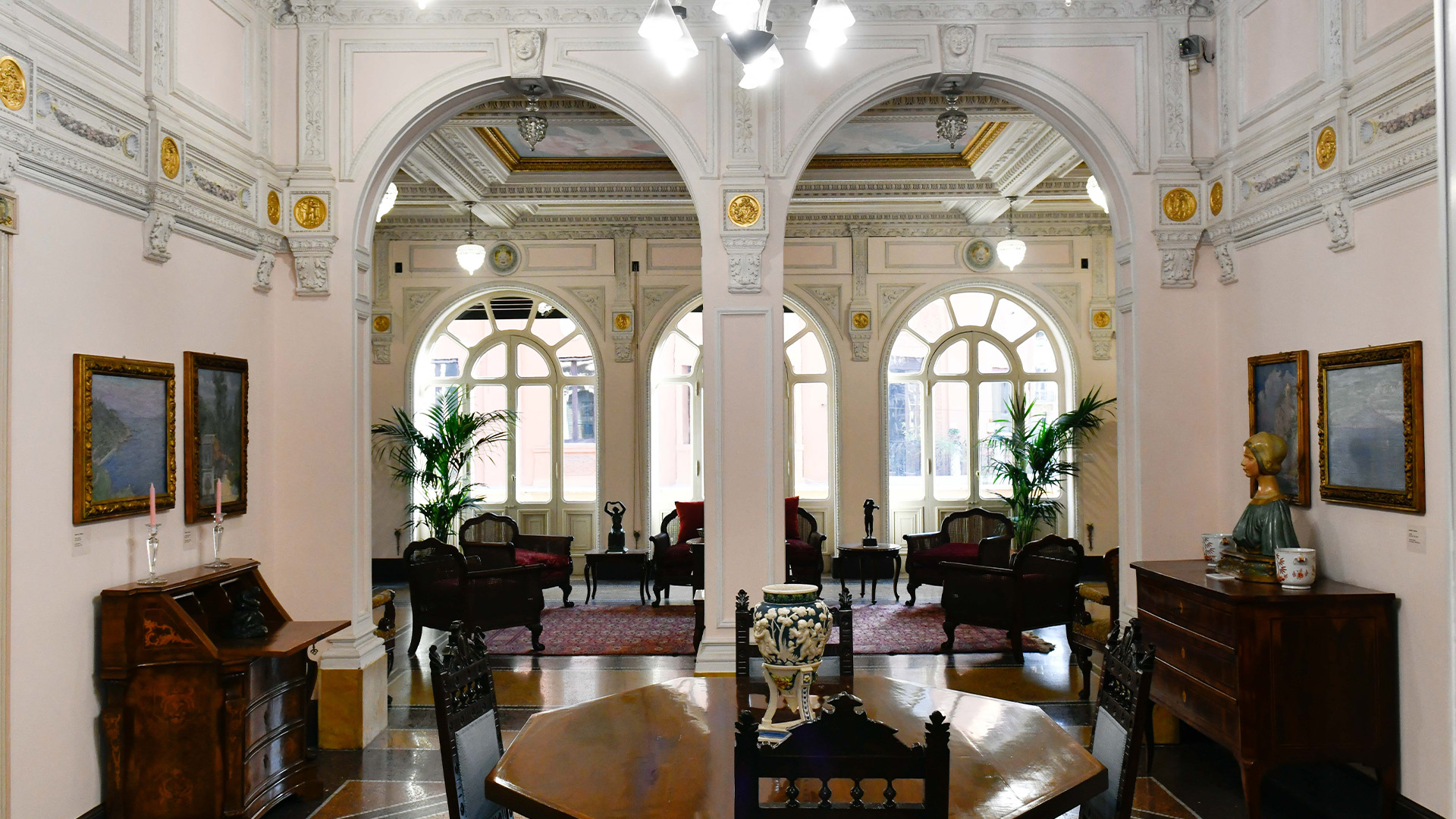
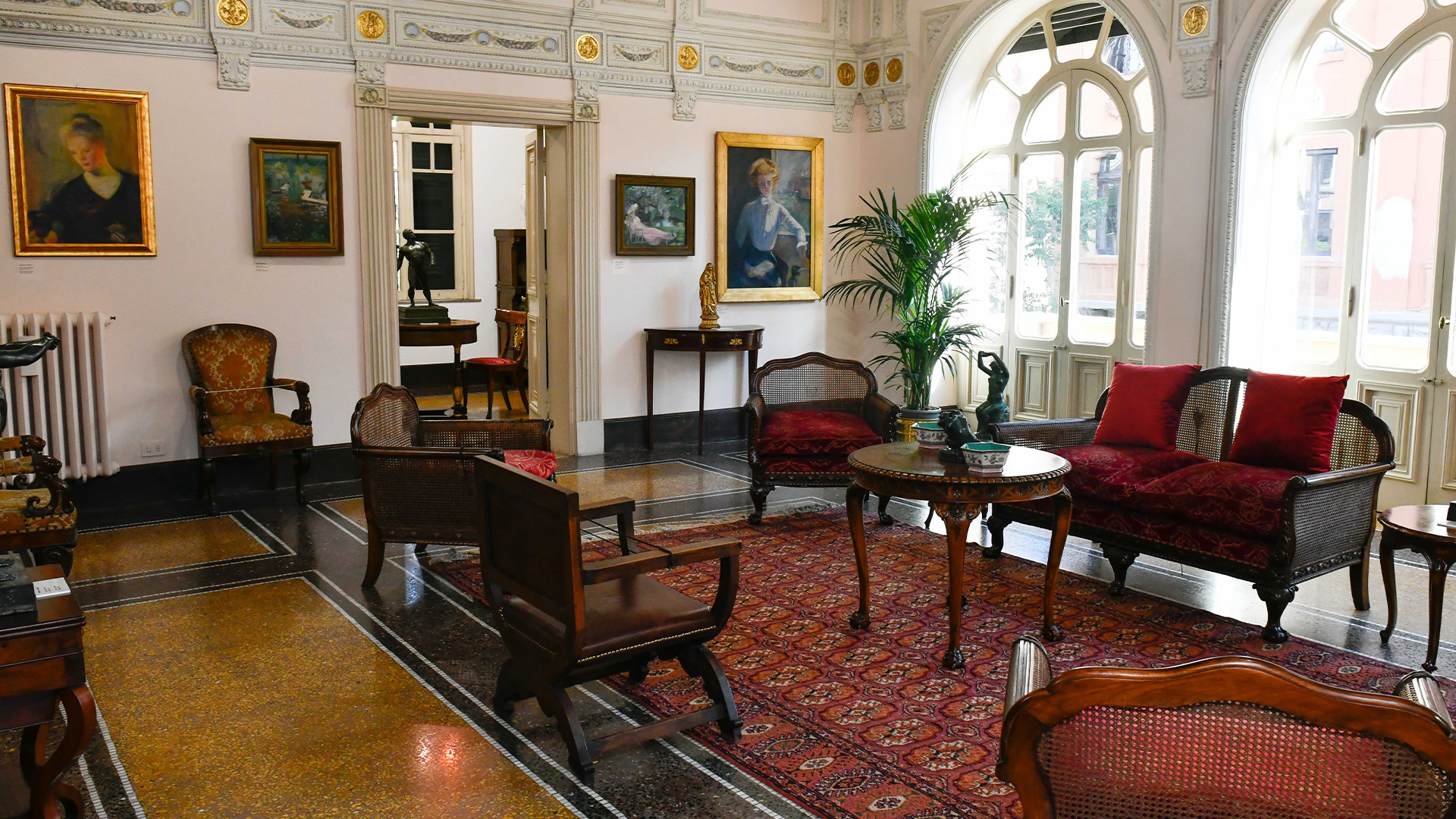
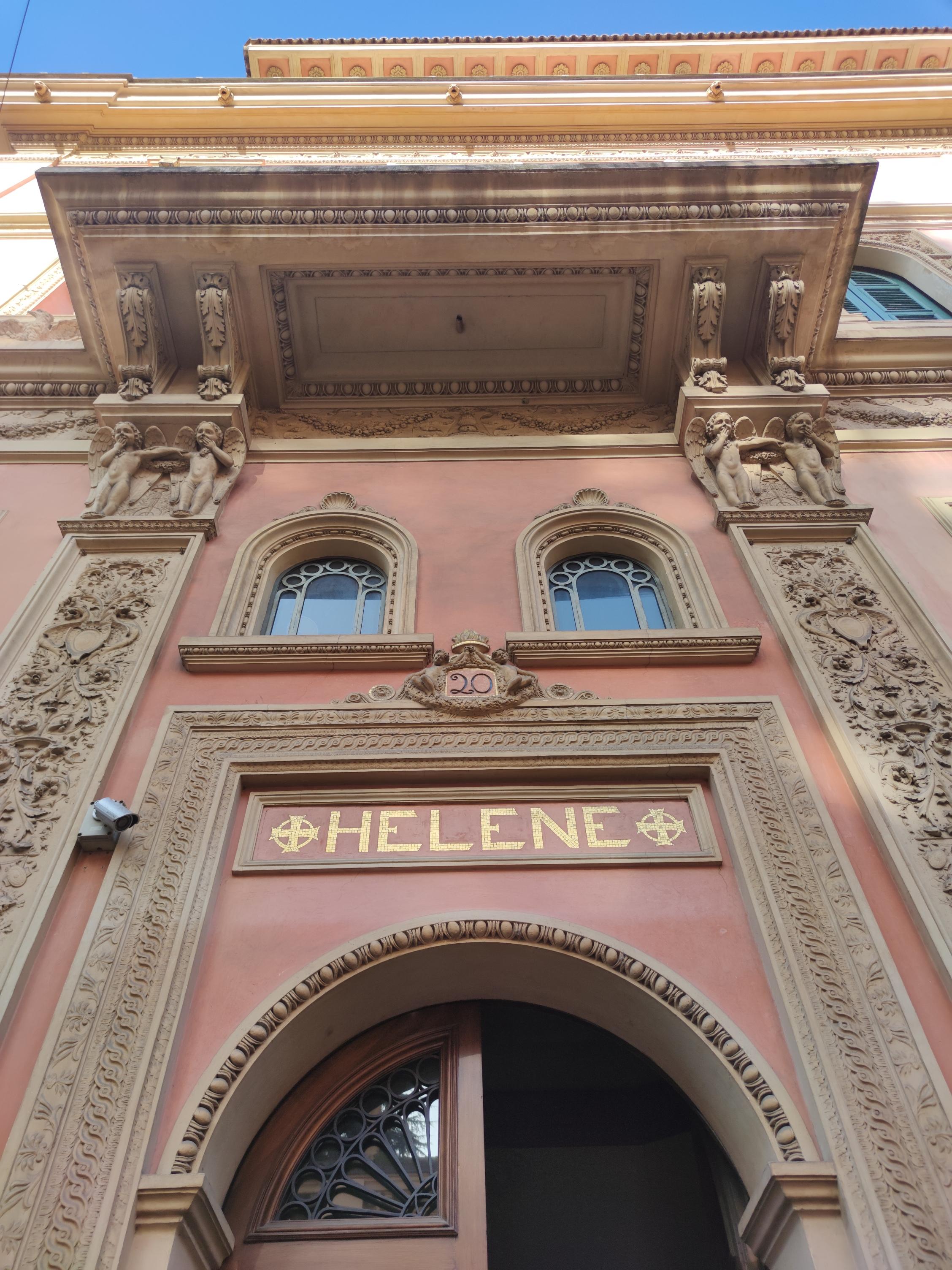
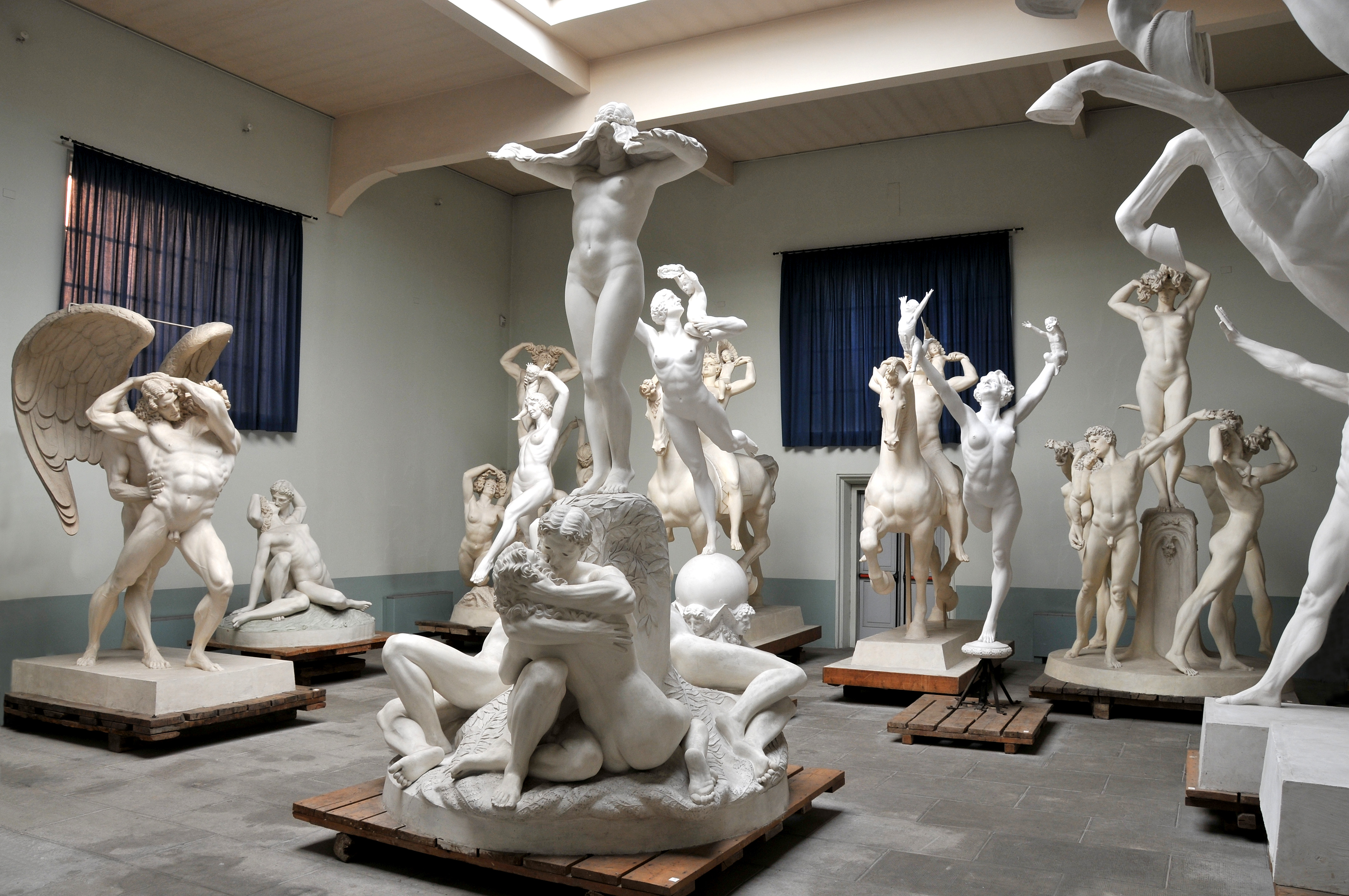
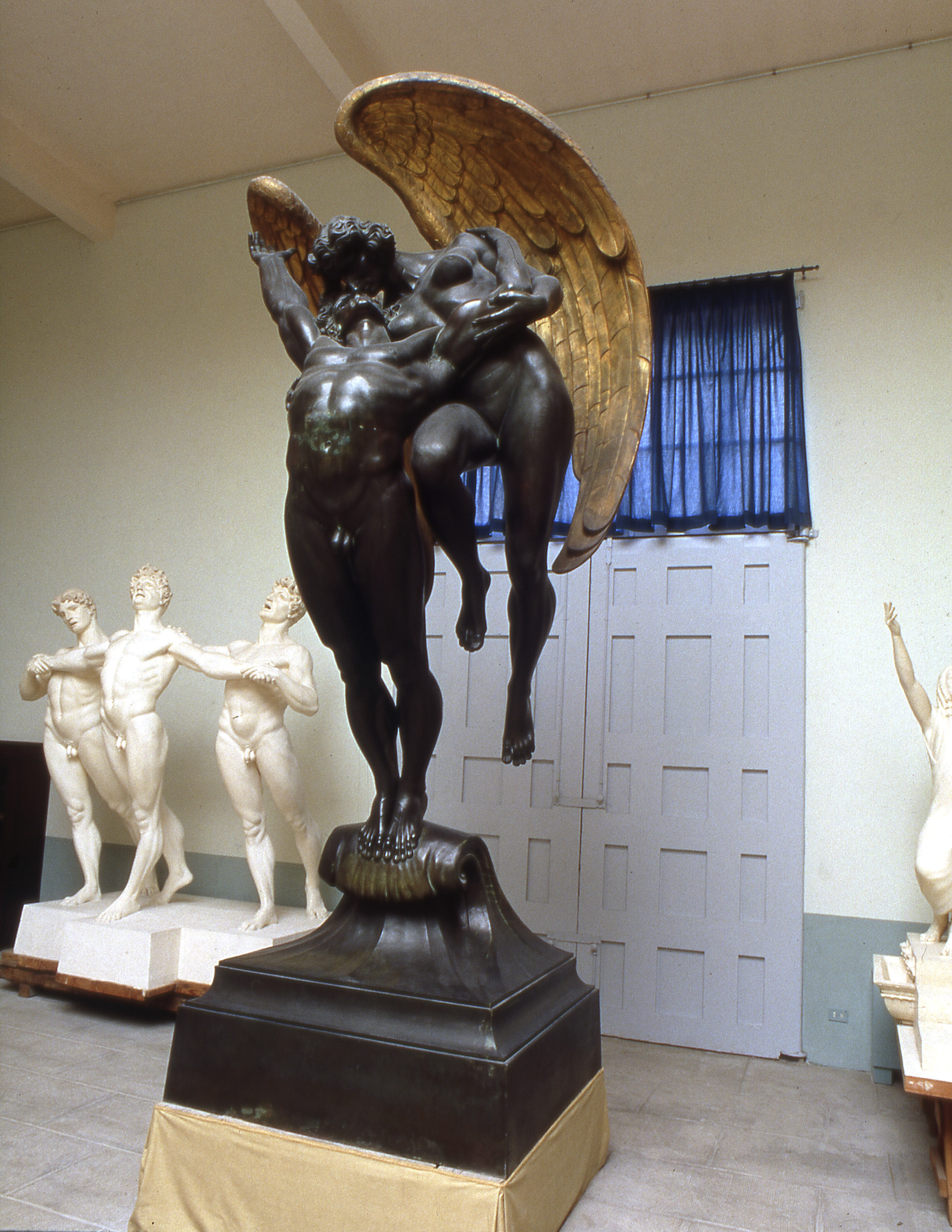
Hendrik Christian Andersen Museum was built between 1922 and 1925 on the basis of Andersen’s design and it was planned as a building with annexed carving Studio nearby Piazza del Popolo.
In 1935 they became just one building surrounded by a border of allegoric paintings. This decorative border is in neo-Renaissance style, furthermore it reminds the fin de siècle American aestheticism.
The artist died in 1940 and he bequeathed Villa Helene to the Italian Government. The museum was inaugurated in 1999 for the fifty-ninth anniversary of Andersen’s death.
At the ground floor the Gallery – that was considered a boardroom, and the Studio - atelier that was used to create his works and shape material – display the monumental sculptures, the portrait-busts and the project-drawings made for The World Centre of Communication.
Today the first-floor flat is an exhibition area for permanent collections as well as temporary exhibitions inspired to the relations between Italy and the foreign artists of the nineteenth, twentieth and twenty-first century.
Photo: Casa Museo Hendrik Andersen
Information
From Tuesday to SundayFrom 9.30 to 19.30 (last admission at 18.45)Closed on Mondays, 25 December
 Condividi
Condividi
Location
To find out about all accessibility services, visit the Rome accessible section.












































